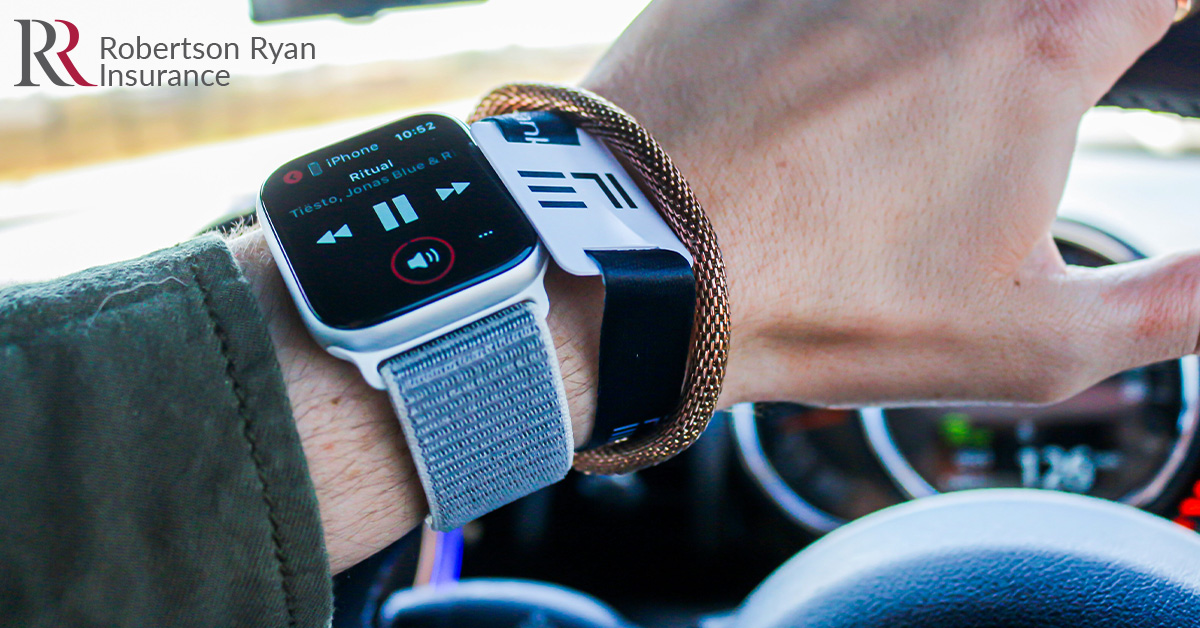Smartwatches: Risk on the Road
May 13, 2025

Smartwatches and the Road: Why Even a Quick Glance Can Be Dangerous
Smartwatches have become a daily companion for many Americans, offering quick access to messages, calls, fitness data, and more. But this convenience comes with risk, especially when used behind the wheel.
The Overlooked Distraction on Your Wrist
Distracted driving remains a major contributor to crashes on U.S. roads, with thousands of lives lost each year due to preventable behaviors. While phones often get the spotlight in distracted driving conversations, smartwatches introduce many of the same dangers, just in a smaller, often subtler package.
Smartwatches contribute to all three recognized types of distraction:
- Visual: Looking at a smartwatch screen requires shifting your eyes off the road.
- Manual: Interacting with a smartwatch means lifting your wrist, tapping, or scrolling (removing a hand from the wheel).
- Cognitive: Even the vibration or alert of an incoming message can shift your focus from the task of driving.
Recent studies suggest that smartwatches may be more distracting than smartphones, especially when they display text-based notifications. These distractions affect all drivers but are particularly concerning for commercial drivers, whose vehicles require greater stopping distances and more focused attention.
What Drivers – Commercial & Personal – Should Know
Whether you’re operating a commercial motor vehicle or your personal car, it’s important to understand how smartwatch use while driving could contribute to unsafe conditions or even liability.
For Commercial Drivers:
- Follow FMCSA guidance: While smartwatches may not be explicitly listed under federal handheld device regulations, their use can mirror that of prohibited mobile phones. A violation could negatively affect your CSA score or be seen as negligence in the event of an incident.
- Consider internal company policies: Many fleets have internal policies restricting use of electronic devices. Smartwatches should be treated with the same level of caution.
- Don’t rely on them for navigation: Use commercial-grade GPS units that are mounted securely and designed for your vehicle type.
For Personal Drivers:
- Understand the risk: Even a quick glance can delay your reaction time. At 55 mph, taking your eyes off the road for five seconds is like driving the length of a football field blindfolded.
- Legal gray areas exist: Many states have laws addressing handheld device use, but smartwatches can fall into a legal loophole. That doesn’t make their use any safer – or necessarily exempt from scrutiny during an insurance investigation or liability review.
- Think like an underwriter: From an insurance perspective, smartwatch use may complicate claims if it’s found to be a contributing factor in an accident. The fewer the distractions, the lower the risk.
Smart Driving Habits to Adopt
- Enable “Do Not Disturb While Driving” features. Both iOS and Android support this across devices, including smartwatches.
- Resist checking notifications. Train yourself to ignore buzzes or dings until you’re safely parked.
- Avoid “quick replies” while in motion. Voice-to-text may be convenient, but it still requires cognitive attention.
- Treat your smartwatch like your phone. If you wouldn’t use your phone at that moment, don’t use your watch either.
Concluding Thoughts on Smartwatches
From a risk management standpoint, the line between mobile phone and smartwatch use continues to blur. While laws are still catching up to technology, that doesn’t remove the responsibility from the driver. Insurance carriers and claims adjusters may increasingly consider smartwatch use as part of distracted driving behavior. For commercial drivers especially, staying ahead of this curve can help prevent regulatory and legal complications.
The goal isn’t to vilify technology – it’s to keep drivers safe. Smartwatches are impressive tools, but when you’re behind the wheel, safety should be the only thing demanding your attention. Whether you’re operating a delivery vehicle or your personal SUV, the message is the same: silence the wrist, and stay focused on the road ahead.
Connect with us or reach out directly to your Robertson Ryan Agent if you have any further questions or concerns.
*Please note that we rely on independent sources, and recommend conducting further research or to seek guidance from a qualified industry professional, legal counsel, or licensed insurance agent as appropriate for your needs. These blog posts are intended for general informational purposes only.